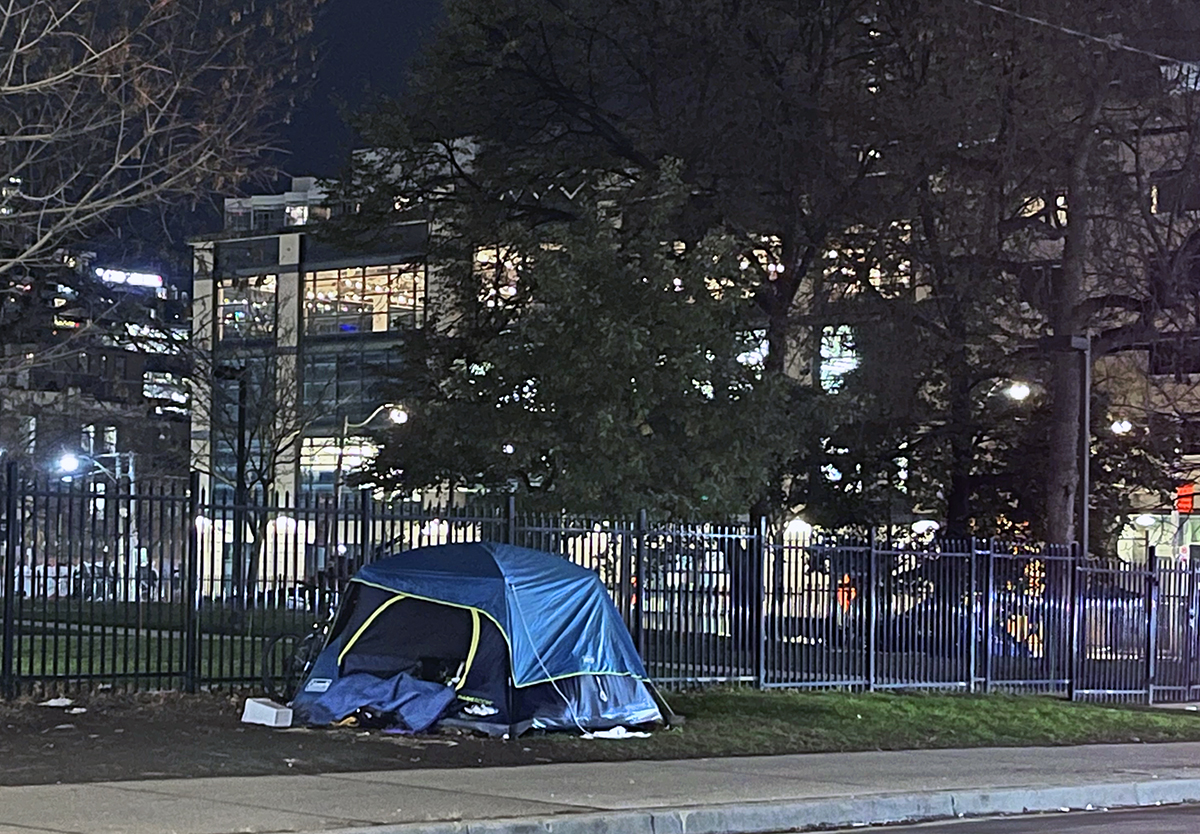Listen to the whole story here:

The City of Toronto will open approximately 1,275 additional shelter and housing spaces for the winter, but advocates say the plan only addresses the surface of a much deeper homelessness crisis.
This year’s Winter Services Plan adds close to 490 new shelter and 24-hour respite spaces within that total. When temperatures fall to –5 °C or during severe weather events, the city will activate five warming centres, offering an additional 244 spaces.
A further roughly 175 surge capacity spaces will open when temperatures hit below -15 °C, and outreach teams will be deployed to encourage people to seek warming centres.
The new shelter plan will run from Nov. 15 to April 15, 2026.
Toronto saw its first snowfall of the season this past Sunday night, as temperatures dropped to -4 °C. In response, the city opened two warming centres ahead of schedule, adding 78 beds.
While she welcomes parts of the plan, Melody Li, executive director of Homeless Connect Toronto, says the city’s plan remains largely temporary.
“Some warming centres are only activated when there’s snowfall or freezing rain,” she said. “Having more consistent 24-hour respite centres is really important. It helps people not to be transient over and over again.”
But Li says once warming centres are closed, there is often nowhere to go.
“You get a warm place for two nights and then back out you go,” she said. “They need to just figure it out until the next cold day when they can come back.”
Looking long-term
City data shows 72 per cent of people who are currently engaged in the shelter system are spending more than six months in emergency shelters.
“The ongoing challenge that we’re facing is really the need for affordable housing,” Li said. “Shelter spaces are for emergency purposes. That’s not the situation we’re in, unfortunately.”
As OTR reported last year, advocates made similar points, warning that seasonal shelters alone cannot meet the needs of Toronto’s unhoused population.
The city says it plans to build more housing and long-term shelter capacity with approximately 370 new permanent supportive and subsidized units this winter season.
However, transferring people out of emergency shelter and into affordable housing requires contributions from different levels of the government.
In an emailed statement obtained by OTR, the City of Toronto said it plans to develop up to 20 new long-term shelters through the City’s Homelessness Services Capital Infrastructure Strategy. It added that the city is currently negotiating with the provincial and federal governments on funding for housing and shelter programs.
The city also said it received a federal funding offer for the Interim Housing Assistance Program in August, which would leave Toronto with a $107 million shortfall in 2025.
Li says she sees efforts made by the municipal and federal government, but provincial acts like Bill 60 “has huge implications on adding to homelessness.”
The Fighting Delays, Building Faster Act, addresses changes to the Landlord and Tenant Board processes in Ontario, but advocates say it weakens tenant protections and expedites evictions.
“The city does as much as they can, and there’s a sudden inner flux because of things like Bill 60,” she said. “That’s one level working, one level unworking it. It needs a coordinated effort from all parties.”
OTR reached out to Ontario’s Ministry for Municipal Affairs and Housing for comment, but has not heard back.
“Homelessness is created by policy,” Li said. “We create homelessness through some of the things we do, and we can also create out of it.”
In producing this story we used Otter AI for transcription.
